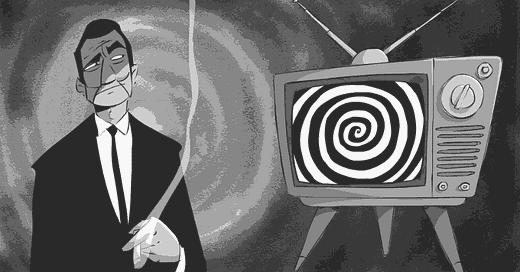FA Player RIP; Early or wrong; YouTube floods the zone; Thinking in bubbles; OTT 2.0; Luxury vs Rip Off; Life isn't coding; Pile of Grok; Inside Edge
Overthinking the sports business, for money
The FA Player RIP
The wording of the release was a bit odd.
The FA Player’s retirement suggests slippers and a well earned cruise around the Nordics, ooh er Matron.
Early or Wrong? What the end of The FA Player means and what it probably doesn’t mean
The FA Player cost about £2million.
It was the governing body’s owned and operated play, built by StreamAMG.
The death knell for the service was the last WSL rights deal, which went big on YouTube over OTT.
The FA will be criticised, because that’s what The FA is there for. Like the BBC, NHS and the Church of England, they are the biggest institutions in the country, so attract haters like a magnet.
For late arrivals to this substack, I’ve laid out my priors when it comes to the private-public divide in sport. Warning: contains nuance.
Which is a long way of saying that your views on The FA will likely shape your views on The FA Player: forward-looking test and learn experiment or a publicly funded white elephant?
Anything I write here is unlikely to change your mind.
But let’s use it to ask a couple of questions as to where we are in terms of rights holder strategy.
Life isn’t coding
Fail fast, test and learn, move fast break things blah blah.
Silicon Valley cliches have become sports biz bingo used by people with a commercial axe to grind against the status quo.
But life isn’t coding.
The recklessness of tech developers - see Grok’s latest calamity this week - just doesn’t fit with the big, slow bureaucracies who serve multiple constituencies and which live permanently in the public eye.
That said, failure is feedback - that’s another one - so if something fails, what did we learn?
Was it specific to The FA Player or was it market related?
Was it execution or strategy?
Is YouTube the one and only answer?
If yes, then what happens to the D2C argument, the oft-referenced walled garden of fans?
YouTube is flooding the zone
To click on Linkedin is to be swamped by pro-YouTube propaganda.
Every other post lays out over 400 AI generated words on why moving your sports content to YouTube is the smart guy move.
Jump to X and you quickly run in to an army of growth hack thread monkeys building the same case.
It all feels very orchestrated.
Almost as if these people are being paid, directly or indirectly, by the platform to shove old Joe Overton’s window a few yards their way.
See previous, from 2020: Sport’s Overton Window is on the move
Whatever. It’s working.
We can safely say that as of July 2025 sport is in The YouTube Era, in which the sports market throws its content at the channel, having been through it’s own ‘build it and they’d better fucking come’ era of OTT. See The FA Player above.
YouTube's fundamental offer - articulated by Tomos Grace at our EBU event in Bratislava - has not changed in 10 years: it provides reach and audience, allowing rights holders to take a clip of the ad revenue, but it typically does not pay large upfront checks or traditional rights fees.
Despite this, some in the sports industry cling to the belief that YouTube will change tack and join the risk-reward party.
Resisting idiotic binaries
Rights holders are left with the question as to where they put their content to best balance those age old adversaries: discoverability and revenue.
Some global sports acronyms are making high six-figure, low seven figure revenues from YouTube by understanding its role in their funnel and balancing it with their own subscription services.
Balanced against that money is the saving of cost and faff on the supply side. You upload to YouTube and go home.
Note George Pyne’s anecdote at the - I hear excellent - SportsPro investment event yesterday, where the Bruin boss recalled the aggro of Deltatre’s NFL Player launch. OTT is hard and if it goes wrong you get a tiny glimpse of what it must be like being the BBC - see Magnets of Hate, above.
Thinking in bubbles
So, the YouTube Era followed the OTT Era.
Another question nobody knows the answer to: is there a bubble beyond the YouTube Bubble?
Or is that it. The end of history?
Has the screen been won by YouTube and Netflix, and everything else is just nosies off?
Or is there, in the sports space at least, another go around; what might be called OTT 2.0, in which the upside of YT starts to feel like a shit deal and the big sports break for the border with their own, far better owned and operated service which joins the dots with merch, tickets and all the other shit sport sells to its users in a way that looks and feels like Amazon and TikTok.
This is what the money thinks will happen.
Why pile in cash without a thesis that goes beyond pennies on the pound via YouTube and a TV bundle that’s breaking up before our very eyes.
The Wonky Conclusion
Someone clever (Howard Marks to be precise) once said that being too early is indistinguishable from being wrong.
Is that the epitaph of The FA Player?
Nice idea, wrong time?
Does that theory stretch across the sports media landscape more generally?
That the first generation of OTT platforms just weren’t good enough. Too limited. Oversold.
The strategists jumped ten years too far ahead based on the wrong tech.
The idea remains viable.
But it ain’t gonna work on YouTube.
So, cue another tech building programme, more billions chasing the same notion of linking media consumption to fan data platforms, meaningful data lakes and merch and ticket tech stacks.
The LTV CAC wet dream hasn’t really happened yet. The mantra of understanding the fan, capturing first-party data to milk customer lifetime value remains an unattainable pipe dream for most sports bodies.
So, that’s the next pendulum swing, back to D2C and all that.
But there’s a wrinkle.
While sport might aim to be like Amazon or Tesco Clubcard.
Are we expecting Amazon and Tesco Clubcard to stand still?
Or, do they move further ahead, taking with them the customer’s expectations of what is frictionless digital service.
Let’s just agree to not think about that for a couple of years.
The Jean Rook Model: The history of women-on-women hit jobs
Let’s not concern ourselves with the motive behind Amanda Platell’s piece on Leah Williamson.
Who knows, it could be viewed as a success factor when the Mail’s attack dog sniffs a return on bile from women’s football #ReturnOnBile.
There’s a playbook, and a whole media studies literature on the strategic role of women columnists, going back to Platell’s predecessor at the Mail, Jean Rook, the ‘first lady of Fleet Street’. They can be employed to target women in a way a male counterpart would never get away with. Personal attacks are often packaged as ‘sisterly advice’, with the neat trick of positioning the writer as protector of women, as seen by Platell’s attack on Williamson framed as protecting "the many women and girls who look up to her as a role model".
This reply was apt.
See also:
Luxury or just overpriced?
The FT asked a good question. Is sport a necessity or a luxury?
LVMH’s bloke went the high road, talking two way image transfer, suggesting that the sheer glamour of watches and perfume will rub off on F1’s oily overalls, which you have to admit is a nice negotiating position:
Nicholas Biebuyck, heritage director at Tag Heuer, says LVMH’s F1 deal had a clear motivation: “Formula 1 wants to elevate its brand’s perception to be a luxury brand, and who better to help them with that than the most valuable luxury conglomerate in the world, LVMH?”
But any talk of luxury in sport and you very quickly you get to prices.
Your view on the question depends on where you’re sitting, and if you’ve paid to get in.
Enshittification
DAZN is running ads during the game at the Club Weird Cup.
Split screen, full sound.
Not everyone’s a fan. From the r/championsleague Reddit:
Enshittification is a term coined by writer and activist Cory Doctorow to describe the predictable decline of digital platforms and online services. The concept follows a specific three-stage pattern:
As sport becomes product, it follows a similar pattern:
Stage 1: Platform courts users - The service starts by offering genuine value to users, often subsidizing features or providing free services to build a large user base. Think of early Facebook with its clean interface and focus on connecting people, or early Google with fast, ad-free search results.
Stage 2: Platform courts business customers - Once the user base is locked in, the platform shifts focus to extracting value from businesses. Users experience degraded service as the platform prioritizes advertisers, data buyers, or other commercial interests. Facebook's news feed becomes cluttered with ads, Google search results get buried under sponsored content.
Stage 3: Platform extracts value for itself - Finally, the platform squeezes both users and business customers to maximize profit for shareholders. Quality degrades further, prices increase, and the platform becomes increasingly user-hostile while maintaining its dominance through network effects and switching costs.
The term captures how platforms exploit their market position once users and businesses become dependent on them. Doctorow argues this isn't accidental but represents a deliberate business strategy enabled by weak antitrust enforcement and the difficulty of switching away from dominant platforms.
The concept has gained traction as a framework for understanding why so many digital services seem to get worse over time despite technological improvements.













